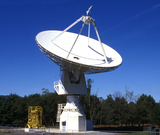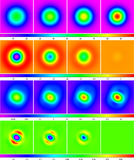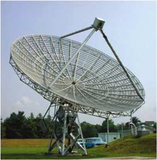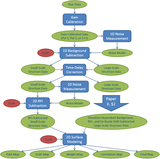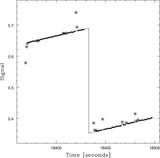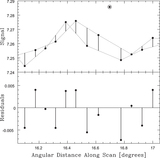Image Details
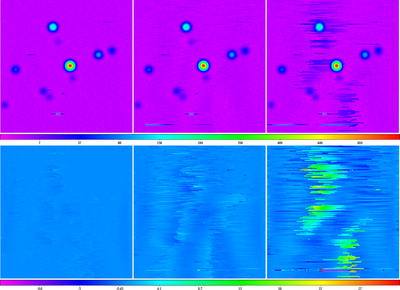
Caption: Figure 22.
Top row: data from Figure 21 background-subtracted, with 6 (left), 12 (middle), and 24 (right) beamwidth scales (the map is 24 beamwidths across). Bottom row: data from the top row (1) minus the data from Figure 16 (residuals) and (2) minus the Gaussian random noise residuals from the bottom row of Figure 14, the small-scale structure residuals from the middle row of Figure 17, and the 1D large-scale structure residuals from the bottom row of Figure 19 (for greater clarity). Elevation-dependent signal is effectively eliminated. Large-scale astronomical signal is not eliminated but is significantly reduced, especially in the smaller background-subtraction scale maps (Figure 20). These gains are furthered by our RFI-subtraction algorithm in Section 3.6.4. Locally modeled surfaces (Section 1.2.1; see Section 3.7) have been applied for visualization only. Square-root scaling is used in the top row to emphasize fainter structures.
Copyright and Terms & Conditions
© 2019. The American Astronomical Society. All rights reserved.


